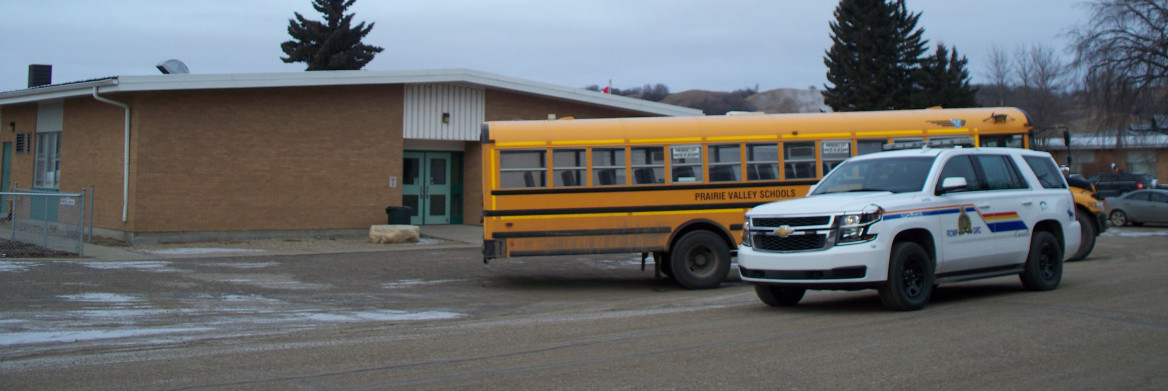If a school faces a serious threat, the RCMP has a plan to keep it safe.
The School Action for Emergencies plan, also known as SAFE, provides critical information and response plans for nearly 5,000 schools in RCMP-patrolled areas.
A computer database contains site-specific content to help first responders during a critical incident such as an active shooter, bomb threat or hostage situation.
"All the important information is at your fingertips," says RCMP S/Sgt. Jeff Comeau, detachment commander in Melville, Sask.
Aerial photos, floor plans and road maps help with situational awareness during a high-stress response and information such as the location of security cameras, fire alarm details and utility hookups are also in the plan.
Knowing what's in and around the school allows officers to close roads and establish staging areas, medical stations and a place for media and parents.
"This would prevent everyone rushing to the school and creating confusion when we're already dealing with a volatile situation," says RCMP Sgt. Shawn French, who guides the SAFE program in Alberta.
SAFE, launched in 2007, is always expanding as new schools are built or building layouts change.
"There's been two high school shootings in the recent past, Taber, Alta., in 1999 and La Loche, Sask., in 2016. We want to make sure we're prepared," says Alex MacKenzie, a public service employee supporting Alberta RCMP community policing.
Full consultation
RCMP officers craft SAFE plans through thorough consultation with school employees and administration.
"It's is a very labour intensive process," says French.
The consultations can include custodial staff, who MacKenzie says can know more about a school's infrastructure idiosyncrasies.
Officers review SAFE data annually keeping police up to date on any changes that could affect a response. The updates ensure the topic doesn't slip out of mind.
"It generates conversations with the school employees and with the officers at the detachment," says Comeau.
For the plan, police meet with local first responders to understand their role during a critical incident.
"Local partnerships with fire and emergency medical services are daily factors in any police response and that's the same for developing a SAFE plan," says MacKenzie.
Dispatching details
Telecommunications operators can also access the plans, allowing dispatch to provide relevant material at a moment's notice. It can be essential in smaller detachments where all available officers may respond to an incident.
"They're our lifeline during responses," says Comeau. "If you're a responding officer you may not have the luxury to pull that information up in the field."
In some provinces, RCMP have organized training exercises based on SAFE plans. A mock critical incident is acted out and officers respond as if it's the real deal.
"You don't want to wait until there's a problem to test your system to see if it works," says Comeau.
SAFE highlights points of interest that could pose risks to officer safety. If the school has a welding shop with compressed gases or hazardous chemicals in a science lab, for instance, the plan shows where they're stored.
The data is crucial when officers respond with immediate action rapid deployment — an intervention technique stressing fluid risk assessment when contacting, confronting and subduing an active threat.
During emergencies, schools can enter lockdown or hold-and-secure. Lockdown occurs when a school faces a direct threat and those inside take shelter until the situation is over.
When there's an emergency situation near, but not related to a school, hold-and-secure has exterior doors locked while classes take place normally. No one can leave until it's resolved.
Cpl. Dwayne Latham, national SAFE plan coordinator, says it's important officers are familiar with the SAFE computer program and the crucial data it provides. He often speaks with RCMP officers about how the program can be more effective.
"We're always looking at what changes and updates can make it better for front-line officers," he says.
